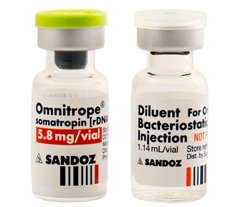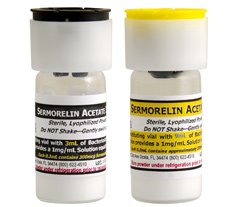Testosterone Deficiency Causes and Effects

Testosterone deficiency occurs in the following ways:
- When the body no longer produces enough testosterone for its needs
- When too much testosterone is converted into estradiol (estrogen) or dihydrotestosterone (DHT)
- Testosterone remains bound to sex hormone binding globulin and cannot break free to provide the signals needed
Aging, menopause, and andropause are the most likely testosterone deficiency causes in older adults. The testes and ovaries begin to decrease testosterone production, leaving a gap that needs to be filled for the body to function properly.
The causes of testosterone deficiency could be present at birth (congenital) or developed later in life (acquired).
Doctors often look to determine which type of testosterone deficiency is the cause of this hormonal imbalance:
|
occurring due to a testicular or ovarian disruption |
|
the issue stems from a problem with the pituitary gland |
|
the disruption takes place in the hypothalamus |
Congenital primary testosterone deficiency hypogonadism causes include:
- Absence of or undescended testicles in males
- Klinefelter syndrome – an abnormality of X and Y chromosomes
- Certain hormone deficiency disorders such as with luteinizing hormone and gonadotropin-releasing hormone
Acquired primary testosterone deficiency causes include:
- Mumps orchitis
- Testicular injury or tumor
- Ovarian tumor
- Surgical removal of ovaries (oophorectomy)
- Chemotherapy or radiation to the ovaries or testicles
- Too much iron in the blood – hemochromatosis – may cause failure of the testes
- Menopause
- Andropause
The causes of testosterone deficiency in the secondary and tertiary categories are similar in many ways because tumors, cancer, and radiation treatments to the pituitary gland or hypothalamus could lead to a breakdown in the release of hormones that signal the ovaries and testes to produce testosterone.
Other secondary and tertiary testosterone deficiency causes include:
- Kallmann syndrome and other pituitary disorders
- Opiate and certain hormone medications
- HIV/AIDS
- Obesity – often slows down or decreases hormone production
- Certain inflammatory diseases including histiocytosis, sarcoidosis, and tuberculosis
Finally, the following issues can also impact the production of testosterone in the body:
- Chronic illness
- Sleep apnea that is not treated
- Alcoholism
- Cirrhosis of the liver
- Chronic kidney failure
- Increased stress
What Causes Testosterone Deficiency in Men?
The age of thirty is often an interesting time in a man’s life. He is settling down into his career and family life, and, just when things seem to be going well, the body starts a slow and steady decline of testosterone production. Low T does not occur overnight, except in extreme cases where injury or illness is involved. Instead, it is a gradual process that often does not let you know anything is wrong until ten or twenty years later.
When we look at testosterone deficiency cause & affect, we see the impact that Low T can have on a man’s life. Because aging is the most likely reason why a decline in testosterone levels occurs, it may seem as though there is no hope – that nothing can be done. Quite to the contrary, there are ways that a man can slow down the decrease in testosterone production.
Among the causes for testosterone deficiency attributed to aging we find the following:
- Leading a sedentary lifestyle – if a man does not get enough exercise and physical activity, he is not stimulating the production of essential hormones in his body, including testosterone.
- Not getting enough sleep – some of the most important hormones in the body, testosterone included, are secreted in abundance during sleep. Anything less than 7 hours or more than 9 hours could impact hormonal production.
- High stress – when stress is present, the body increases production of cortisol, a hormone that adversely impacts testosterone levels.
- Poor diet – consuming large amounts of sugar and greasy, fried, fatty, and processed foods have a negative effect on hormone production.
With the natural decline in testosterone production topping the list of testosterone deficiency causes, adding to it with poor lifestyle choices only makes it happen quicker.
Causes and Effects of Testosterone Deficiency in Women
Menopause and oophorectomy are the two most common causes of testosterone decline in women. The ovaries produce the bulk of a female’s testosterone, with a small amount coming from the adrenal glands, as well.
When we look at what causes testosterone deficiency in women, we have to first realize that when the ovaries stop working, they cease production of not only testosterone but also progesterone and estrogen, as well. Progesterone is the precursor or source hormone used to create testosterone and estrogen, along with many other hormones. Without enough progesterone, hormone production throughout the body will suffer.
Progesterone requires cholesterol as its base, and diets that cut out the needed cholesterol also lead to hormonal decline.
Another aspect of these testosterone deficiency causes is the way the body converts testosterone into estrogen. Estradiol is the product of testosterone conversion by the enzyme aromatase. Belly fat produces aromatase which increases estrogen levels that then tell the metabolism to store fat. More fat means more aromatase which leads to lower testosterone levels and higher estrogen levels, creating an imbalance called estrogen dominance. This same conversion process also occurs in men.
The use of oral contraceptives, problems with the adrenal glands, early menopause, and overproduction of prolactin can also lead to Low T in women.
Because testosterone is essential for strong bones and muscles, brain functions, libido, red blood cell production, and more, testosterone replacement therapy is essential for the treatment of Low T.
Please contact Kingsberg Medical for a free consultation, local diagnostic testing, and affordable treatment options.
Brian Leeber



















